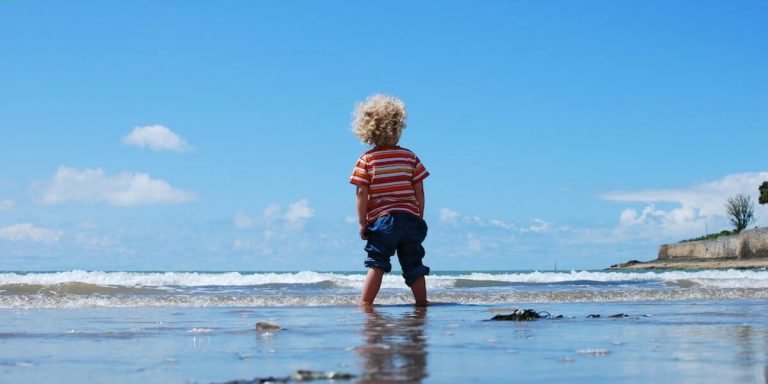Daycare Age: Navigating the Ideal Transition for Your Child’s Education
Understanding when to transition your child from home care to daycare can be a complex decision. This crucial developmental choice hinges on many factors, including the social skills of the child and their mental preparedness for such an environment. However, one key factor often dominates this deliberation – ‘daycare age’.
Parents grapple with what would constitute as an optimal time in terms of their youngster’s development.
The debate surrounding ideal daycare age is not trivial; it directly correlates with early childhood education principles that shape future learning experiences. Making this move too soon or too late can have consequences for both parents and children alike. Hence, providing careful thought and consideration must precede these decisions about transitioning into structured childcare settings.
Did you know?
Surprisingly, research from the National Institutes of Health reveals that children attending high-quality daycare display better cognitive and academic achievement scores into their teens compared to those in a home-based setting or lower quality daycares.
Understanding Daycare Age: When to Start Early Childhood Education
Daycare age is a crucial factor in determining the appropriate time to introduce early childhood education. As parents and educators, it’s important to recognize that the foundation for cognitive development is laid quite early; hence, identifying an optimal daycare age can be critical.
In 2023, with technology being integrated into educational models at every level – from primary schools to universities – its introduction during the daycare years has become an approach embraced by forward-thinking educators worldwide. Children are digital natives today; thus incorporating technology-focused learning experiences at their earliest stages of life significantly reinforces their engagement levels as well as paves way for smoother future interactions with tech-embedded curriculums.
However, while considering ‘when’ we must also address ‘how’. It’s not about merely introducing gadgets or software but instead building a comprehensive techno-pedagogical plan which aligns with children’s developmental needs around this formative period – typically spanning between one and five years old when kids ideally attend daycare centers. This involves considering factors such as individual child maturity rates along with research-backed guidelines on screen-time limits among young children.
Key Factors Influencing the Right Starting Age for Daycare
Choosing the perfect daycare age for your child is a decision that parents often grapple with. This choice can significantly influence their overall development, as early childhood education plays an integral role in shaping young minds.
Firstly, understanding your child’s readiness to join daycare helps greatly. At around two years old, children usually begin socializing and exploring new environments more effusively. Thus, this could be considered optimal daycare age; however, every child develops at their own pace – there is no one-size-fits-all rule here.
Cognitive growth is another critical factor to consider when deciding on the right starting age for daycare. Early learning programs are designed specifically to fuel cognitive development by providing various activities aiding language acquisition and problem-solving skills creation.
Emotional maturity should not be underestimated either during these formative years of life—the ability to express needs or handle separation anxiety impacts how well they adjust in such settings.
Next up – physical health! A robust immune system ensures kids can adapt comfortably within group care environments without falling ill frequently from common bugs getting passed around among toddlers!
Comparative Analysis of Developmental Milestones by Daycare Age
The journey of childhood development is a fascinating one, and the role that daycare age plays in it is particularly interesting for both educators and parents. Understanding this aspect can significantly enrich early childhood education efforts.
In our modern world where technology integration in education has become increasingly vital, understanding developmental milestones by daycare age could be crucial. Through this comparative analysis, we hope to lend clarity on when young learners might benefit most from these advancements.
Infants (up to 1 year) are at the very beginning of their developmental journey, yet even they have shown an impressive ability to interact with educational tech resources designed appropriately for them! These include musical mobiles or soft plushies with integrated sounds – simple technologies fostering cognitive growth while also keeping them entertained.
Toddlers (from 1-3 years), often regarded as an optimal ‘daycare’ age group due to their rapidly increasing motor skills and cognitive abilities – start demonstrating curiosity about devices such as tablets. Apps focused on story-telling or basic image recognition games come into play now. They stimulate creativity, enhance language acquisition whilst also providing stimulating entertainment!
Finally then comes school-going kids who have typically crossed the ‘daycare’ stage – but nonetheless remain significant partakers in digital learning ecosystems today.
Curriculum Design for Different Daycare Ages
In the modern world of 2023, where technology integrates seamlessly into various aspects of our lives including education, it’s imperative to incorporate this integration in early childhood educational curriculum designs. Especially when considering daycare age children, a carefully crafted approach can pave the way for a seamless transition from home-based learning to school-based education. This blending is not just about introducing devices and interactive screens; rather it should focus on making these tools part of their everyday learning journey.
The crux lies in aligning technological advancements with developmental milestones unique to each daycare age group. For toddlers transitioning to pre-schoolers (2-4 years old), implementing digital storytelling platforms that stimulate their imagination can provide an apt balance between entertainment and study time. Meanwhile, kindergarteners who are stepping into more structured forms of academic instruction (5-6 year olds) may greatly benefit from tech-powered phonics games or simple coding apps that introduce them gently but effectively towards computational thinking.
At every step along this spectrum though,the overarching goal ought always be nurturing resilience against screen-addiction while promoting creativity and critical thinking facilitated by technology – both soft skills highly sought out in today’s fast-paced digitized society.
Technology then isn’t merely being used as an ‘add-on’ within classrooms but has become central strategy around which curriculums tailored for different daycare ages are designed – providing engaging content at the right pace while meeting specific learning outcomes necessary at each stage.
Tailoring Learning Activities to Enhance Cognitive Growth
In our fast-paced, evolving world, tailoring learning activities to enhance cognitive growth is more important than ever. Notably for daycare age children, where the brain’s development is at its peak. The right blend of technology and traditional educational methods can not only arouse curiosity within young learners but also facilitate their mental progression remarkably.
Enriching technological tools have proven effective when integrated into preschool curriculums: offering engaging platforms that stimulate young minds while enhancing critical thinking skills from an elementary stage itself.
Interactive eBooks or digital storybooks are excellent instruments for improving literacy among toddlers; they transform mundane reading sessions into vibrant interactive ones by narrating familiar tales with captivating animation and voice-overs (Chera & Wood 2023). This potent combination encourages youngsters’ attention spans while subtly fostering language acquisition skills – essential aspects of cognitive advancement during this daycare age phase.
Augmented Reality games provide another innovative avenue for integrating technology in early childhood pedagogy seamlessly (Yogev-Seligmann et al., 2023). By encouraging movement coupled with cognitive engagement like storing sequences or navigating mazes virtually heightens problem-solving abilities besides further refining motor competencies.
Emotional and Social Skill Development in Early Childhood Settings
Understanding the emotional and social skills development in early childhood settings is an essential aspect of curriculum design for different daycare ages. It contributes significantly to children’s overall well-being, academic performance, and interpersonal relationships later in life.
During these formative years commonly referred as ‘daycare age,’ children learn how to express their feelings, understand others’ emotions, make friends, share resources with peers – lessons pivotal for their future lives. As such educators must provide a conducive environment that fosters these crucial skill sets.
Current trends show integration of technological tools into education at an early stage contributing positively towards this cause. Picture interactive storytelling apps helping students develop empathy by putting them into protagonists shoes or gamified puzzles instigating team building traits amongst toddlers – technology when used appropriately can have far reaching positive effects on shaping young minds.
Further leveraging technology’s potential are virtual reality (VR) sessions designed especially for younger kids marking high impact in developing collaborative problem solving skills typical of real-world scenarios bringing practicality into classroom learning from tender ages itself.
However all said about technology benefits having human moderation cannot be emphasized enough . Adult guidance ensures appropriate use while encouraging face-to-face interaction amidst increased screen times ensuring proper balance between manual engagement versus digital immersion .
Lastly parents and teachers need stay updated about latest tech advancements related to education : attending webinars subscribing newsletters joining forums anything enabling you keep abreast changes thereby optimally assisting your child navigate through his/her journey infancy till school readiness makeup various facets comprehensive curriculum catering specific needs unique daycare age groups .
Transitioning Smoothly into Daycare: Strategies for Various Ages
Transitioning smoothly into daycare is an essential yet challenging phase for both parents and children. In this digital era, technology integration in education can help ease this transition across various ages or ‘daycare age’. Tech tools today are not only kid-friendly but also tailored to meet unique developmental milestones corresponding with each age group.
For toddlers stepping into the daycare environment, interactive apps and virtual reality-based objects play a significant part. They offer visual stimuli that enhance their cognitive skills like shape recognition while nurturing social interaction through shared experiences. Equating everyday routines at home with those of the school via these tech mediums reduces anxiety about new surroundings and helps them adjust better.
As they grow older, preschoolers experience more structured learning at daycares, where technology continues to be instrumental. Digital storytelling platforms allow kids to create personal narratives while enhancing language proficiency—an important aspect of early childhood education—thereby aiding smoother transitions within increasing ‘daycare-age’ levels.
However beneficial it may seem though; striking balance remains key when integrating technology in any form during a child’s early years – after all too much screen time is detrimental for healthy development too! Hence why many childcare centers now incorporate outdoor digital playscapes offering physical engagement alongside technological exposure – A great way indeed in ensuring young minds adapt beautifully to evolving educational practices even amidst changing times like 2023+.
Preparing Your Child Emotionally and Practically for Daycare Entry
To smoothly transition your child into daycare, consider employing practical strategies that cater to their specific needs and temperament. Here’s how:
Firstly, it is essential to prepare your little one emotionally before entering daycare at any age. Consistent communication about what they should expect can help reduce anxiety or apprehension feelings associated with new experiences like these.
For toddlers who are yet learning language skills, visual cues such as children’s books featuring characters starting school or visiting pretend classrooms may play a key role in helping them understand better.
Similarly, preschoolers benefit highly from open discussions; explaining things like drop-off routines while driving past the facility could work wonders in alleviating nervousness tied with first-time separations.
Secondly comes practical preparation – everything that makes them “daycare ready”. This includes gradually adjusting bedtimes and wake-up times to match their future schedule at daycare so that sleep-related crankiness doesn’t hamper initial days.
It also involves discussing hygiene practices (like regular hand-washing) often taught in early education centres due to evident reasons concerning childhood health safety norms expected within shared spaces during 2023!
Adapting to the Structured Environment: Tips for Parents
In the modern world, early childhood education is becoming increasingly important. As children transition to daycare at different ages, it can be a challenging time for both parents and kids alike. However, adapting efficiently to this structured environment brings numerous benefits.
Firstly, understand that every child will react differently depending on their “daycare age.” Some may adapt easily while others might struggle initially due to separation anxiety or unfamiliar circumstances. It’s essential as parents to remain patient and supportive during these times.
1) Offer Reassurance: Always reassure your child of your return when leaving them at daycare. This reduces anxiety and soothes any uneasiness they may have about being left in an unknown place with strangers.
2) Establish Routine: Children thrive off routine; having consistent drop-off times creates a sense of security which makes nursery adaptation smoother over time.
3) Communication is Key: Talk often with your little one about what happens in the educational setting—teachers’ names, routines that occur there etc., all help familiarize them more before attending.
4) Practice Separation: Before joining pre-school full-time try gradual increases – from short stays progressing into longer periods across days or weeks.
5) Encouraging Independence: Skills like self-dressing or using utensils independently boost confidence levels making transitions easier!
Conclusion
In essence, navigating the ideal daycare age transition is a crucial step in your child’s educational journey. It involves not just understanding your child’s readiness but also choosing an environment that can nurture their curiosity and foster lifelong learning habits. Remember, every child develops at their own pace and what works for one may not work for another; it’s about finding the balance tailored to meet your little one’s unique needs.
We hope this blog post has provided some clarity on “daycare age” transitions. We encourage you to delve deeper into our website, as we offer plentiful resources packed with practical tips and innovative strategies aimed towards guiding parents like yourself through various stages of childhood education intricacies. Educators are also well-catered for – providing them support in fostering effective teaching methods designed specifically around engaging young minds effectively.







